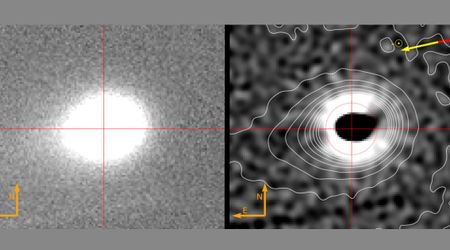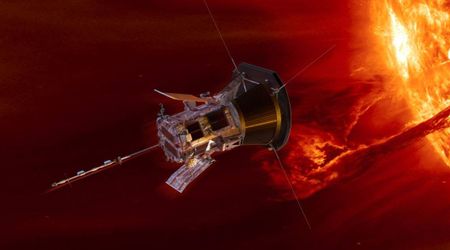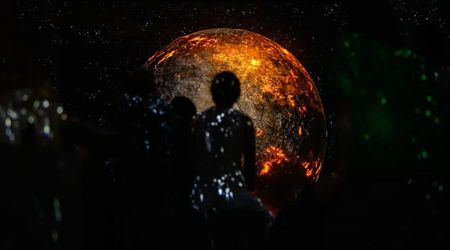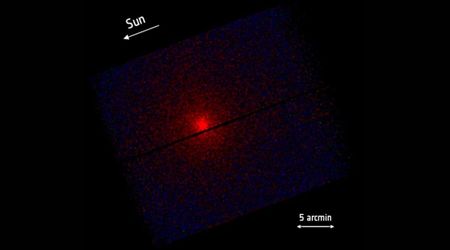What are the hottest things in the universe?

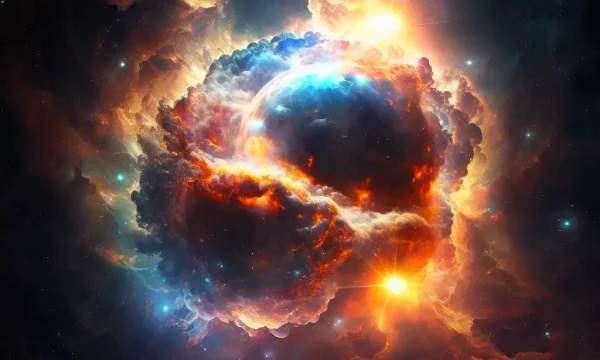
If heat is energy, then temperature is a way of measuring that energy. When it comes to our little planet, it’s easy to assume that Death Valley’s scorching 56.7 degrees Celsius / 134 degrees Fahrenheit record is the hottest place in the world.
But can it can any hotter? Turns out even our Sun isn’t so hot when compared to other celestial objects in the Universe. Here are some of the hottest things in our Universe!
The hottest thing in the Universe (Supernova)
Supernovas are the hottest thing in the Universe as they reach a million degrees Celsius. These explosive events occur when a star between 8 and 40 times more massive than our Sun reaches the end of its stellar lifecycle and explodes when its core collapses.
A star’s core collapses when it is no longer able to produce enough energy through fusion to counteract its own gravity. In another scenario, a star can go Supernova when it suddenly reignites its nuclear fusion. This often happens with degenerate stars such as white dwarfs.
Kepler’s Supernova, which occurred in 1604, was the last major supernova event directly observed from Earth. On average, supernova events occur in the Milky Way thrice every century.
One smaller supernova event happened in 1987 when the blue supergiant star designated as SN 1987A went nova in one of the Milky Way’s satellite galaxies, namely the Large Magellanic Cloud. This explosion was so powerful it could be observed even with the naked eye despite being 168,000 light-years away from Earth.

The hottest thing in the galaxy (WR 102 star)
Besides supernova events, there are other scorching objects in our own galaxy, such as the Wolf-Rayet star WR 102. This rare type of star is predicted to go Supernova in the next 1,500 years. It is about 380,000 times brighter than our Sun and sixteen times more massive.
Temperature analysis indicates that it is 209,726 degrees Celsius / 210,000 degrees Kelvin hot. Only three other similar stars were observed in our galaxy, but they are cooler. WR 142, for example, has a temperature of 200,000 degrees Kelvin, while WR 93b is at 160,000 degrees, and WR 30a has 129,500 degrees, Kelvin.
The hottest thing in the solar system (The Sun)
Coming back to our solar system, the hottest thing around is, naturally, our star, the Sun. The Sun is 5,505 degrees Celsius / 5,778 degrees Kelvin hot. It pales compared to the WR 102 star, which is 36.3 times hotter than our Sun.
If the average temperature on the Earth is 13.9 degrees Celsius, and the WR 102 Wolf-Rayet star replaces our Sun, then the average temperature on Earth might get around 504.57 degrees Celsius.
This exceeds even Venus’s average temperature of 464 degrees Celsius, which is the hottest planet in the solar system. Mercury, which is the closest planet to the Sun, has an average temperature of only 167 degrees Celsius, making it the second-hottest planet and third-hottest object in our solar system.

The hottest thing on Earth (Large Hadron Collider experiment)
Though the temperatures recorded in Death Valley are the hottest naturally occurring on Earth, humanity has repeatedly proven that it reaches beyond its limits. The temperatures reached in 2012 through the Large Hadron Collider experiment reached a staggering 5 trillion degrees Kelvin / 7.2 trillion degrees Fahrenheit, which is hotter than a supernova.
This artificially created temperature still holds even today the biggest record for the hottest thing ever created on Earth. The experiment lasted only a split second, but it will most definitely be the hottest temperature created by humans for many years to come.
The hottest temperature to ever exist (Big Bang)
Estimations of the Big Bang’s temperature vary, but most scientists agree that the Universe’s temperature reached 1,000 trillion degrees Celsius at its inception. This temperature lasted only a fraction of a second after the explosion. This is around 200 times more powerful than the temperatures produced by the Large Hadron Collider experiment.
The Role of Heat in the Universe
Heat plays a major role in the Universe, both in the formation and evolution of stars, planets, galaxies, and life. In space, heat is transferred through radiation, and the warmer a star is, the faster it burns its hydrogen supplies.
The produced heat pushes outward and is in a constant battle with the inward pull of gravity. The resulting pressure enables the star to remain in hydrostatic equilibrium. Without this equilibrium, stars would explode into supernovas.
If planets orbit around a star, they warm up due to heat radiation transfer, but this is only thanks to the hydrostatic equilibrium of the star. Even when stars reach their supernova stages, heat still plays an important role as it creates new atomic nuclei, and most scientists regard supernovas as the mediums through which new elements that are heavier than iron are created.
Iron, like other elements, is essential to life because even the iron contents in our blood were created from supernova explosions. When it comes to planets and other stars, they are created out of the debris and the new elements produced by supernova explosions.
More stabler but less massive stars are born and contribute and influence their surroundings, including planets. Planets also have internal heat left over from when they first formed, which also contributes to their environment as well.
When it comes to galaxies, they tend to grow hotter as they age. Gas atoms are pulled toward galaxies and get heated up, which can be used as an indicator of their age and overall location. Heat is, without a doubt, a critical factor in sustaining life.
All life forms rely on heat to produce at least some form of energy. Heat is also used as a measurement of energy. For example, a calorie is a unit of energy equivalent to the heat energy needed to raise the temperature of 1 gram of water by 1 °C. Without heat, there would be no life because there would be no energy.
Lights out: When the Universe runs out of fuel
Stars burn bright for aeons, but they won’t produce heat forever. What will happen when the Universe runs out of fuel, and stars will no longer be born? This is where the theory of the heat-death of the Universe comes in as the concept of entropy.
Entropy in thermodynamics measures the amount of disorder in a system and how much energy isn’t available to do work. When a system reaches a certain level of disorder, the entropy grows higher, and less energy is available to do work.
When it comes to the heat-death theory, according to the second law of thermodynamics, if the Universe grows infinitely, entropy increases until it reaches its maximum point, which means that reactions will no longer take place because they aren’t possible due to the lack of energy.



